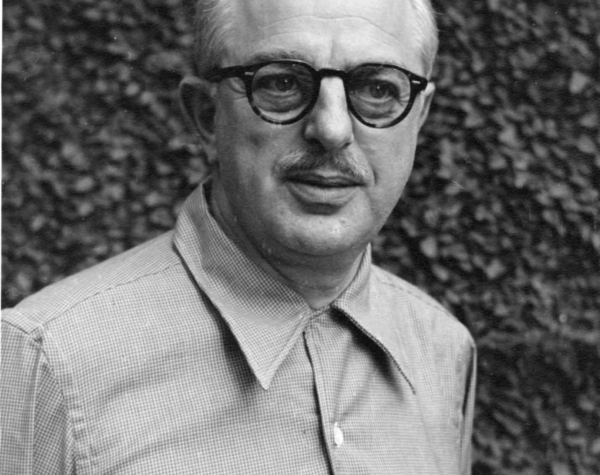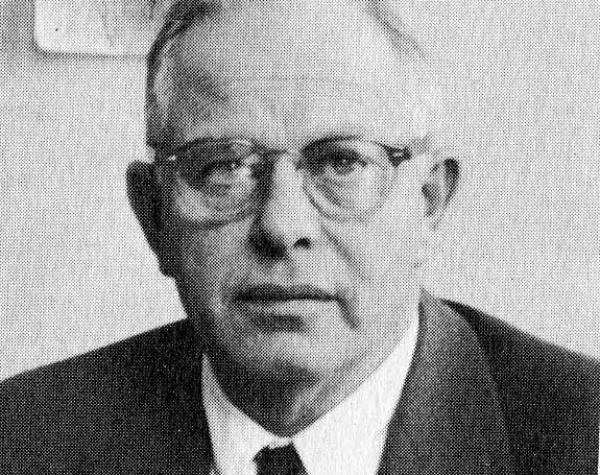About the Project
The Wiener Architecture Interactive Map is the first, and only, digital repository of the life and works of Sam and Bill Wiener—two of the most innovative and prolific architects in the American South. Bringing together architectural documents, press coverage, historical and contemporary photography on 17 of the Wieners’ most important extant projects in Shreveport, the Interactive Map offers a resource for students, the curious, and anyone interested in learning more about Modernist architecture and its place in the city of Shreveport. Most text, including building descriptions, is lightly adapted from The Modernist Architecture of Samuel G. and William B. Wiener: Shreveport, Louisiana, 1920-1960, by Karen Kingsley and Guy W. Carwile.
About the Wieners
Architects Samuel Gross Wiener Sr. (1896-1977) and William Benjamin Wiener Sr. (1907-1981) were half-brothers, sons of second-generation German Jewish immigrant Sam Wiener Jr. (1864-1942). Both Samuel G. and William B. Wiener studied architecture at the University of Michigan with Samuel graduating in 1920 followed by William in 1929. Samuel continued his education as a graduate student in Europe whereas William studied briefly at Columbia University though he never graduated due to his dissatisfaction with the Beaux-Arts trajectory of the program. Shortly after completing his formal education, Samuel became a partner with the firm of Jones, Roessle, Olschner and Wiener in 1923. Jones and Roessle worked out of the main office in New Orleans and Olschner and Wiener out of a branch office in Shreveport, giving the firm a presence in both north and south Louisiana. William opened his own practice in 1933 where he initially worked out of his parent’s house on Austen Place before moving to office space in the central business district.
The Wieners designed over 130 buildings over the course of their careers, running the gamut from residential, commercial, and civic structures, many of which were celebrated at the time for their innovative design. Experimental and daring, theirs is a uniquely Modern architecture, adapting the high design of Bauhaus and Art Deco to the Louisiana geography in the service of architecture as a “social, public, and functional art.” In their lifetime, their work won them the recognition of the American Institute of Architects, Architectural Record, International Institute of Arts and Letters, and numerous others. Several of their buildings are included in the National Register of Historic Places.

Samuel G. Wiener Sr.
(From “The Modernist Architecture of Samuel G. and William B. Wiener: Shreveport, Louisiana, 1920-1960,” Karen Kingsley and Guy W. Carwile; published by L.S.U Press in 2016. Courtesy: Roy Parish and Bill Wiener.)

William B. Wiener Sr.
(Courtesy: Northwest Louisiana Archives at LSUS.)
The activity that is the subject of this report has been financed in part with federal funds from the National Park Service, U.S. Department of the Interior, through the Department of Culture, Recreation and Tourism, Office of Cultural Development, Division of Historic Preservation. However, the contents and opinions do not necessarily reflect the views or policies of the Department of the Interior nor the Department of Culture, Recreation and Tourism, nor does the mention of trade names or commercial products constitute endorsement or recommendation by the Department of the Interior.
This program receives federal financial assistance for identification and protection of historic properties. Under Title VI of the Civil Rights Act of 1964, Section 504 of the Rehabilitation Act of 1973, and the Age Discrimination Act of 1975, as amended, the U.S. Department of the Interior prohibits discrimination on the basis of race, color, sexual orientation, national origin, disabilities, religion, age, or sex in its federally assisted programs. If you believe you have been discriminated against in any program, activity, or facility as described above, or if you desire further information, please write to:
National Park Service
1849 C Street, N.W.
Washington, D.C. 20240
